
Aragatsotn is a province (marz) of Armenia. It is located in the western part of the country. The capital and largest city of the province is the town of Ashtarak. The Statistical Committee of Armenia reported its population was 128,941 in the 2022 census.

Ferentino is a town and comune in Italy, in the province of Frosinone, Lazio, 65 kilometres (40 mi) southeast of Rome. It is situated on a hill 400 metres above sea level, in the Monti Ernici area.

Makaravank is a 10th-13th century church complex near the Achajur village of Tavush Province, Armenia, located on the slope of Paitatap Mountain. The complex of Makaravank ranks among Aghtamar, Bgheno-Noravank, Gandzasar with its originality, richness and variety of ornaments and occupies an important place in Armenian architecture.
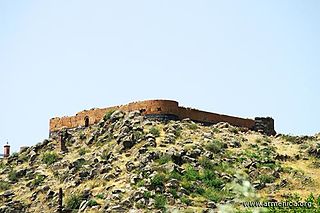
The village of Kosh is in the Ashtarak district, about 18 kilometres (11 mi) south-west of the district centre. There are numerous remains from early Iron Age residential ruins and buildings of large basalt stone blocks. There is information referring to Kosh in Armenian scripts from the 5th century.

Kosh is a village in the Ashtarak Municipality of the Aragatsotn Province of Armenia, 18 km south-west of the district centre Ashtarak. The town is attested as Kvash in early Christian times. In the town are ruins of a 13th-century church - Saint Grigor - and a castle which has yielded Hellenistic pottery remains. There are numerous remains from early Iron Age residential ruins and buildings of large basalt stone blocks.

Armenian architecture comprises architectural works with an aesthetic or historical connection to the Armenian people. It is difficult to situate this architectural style within precise geographical or chronological limits, but many of its monuments were created in the regions of historical Armenia, the Armenian Highlands. The greatest achievement of Armenian architecture is generally agreed to be its medieval churches and seventh century churches, though there are different opinions precisely in which respects.

Saint Christopher Monastery is a restored Armenian church of the 7th century, located in a cemetery 2.2 kilometres (1.4 mi) southeast of the outskirts of Dashtadem village and Dashtadem Fortress in the Aragatsotn Province of Armenia. Adjacent to the church (north) is a 13th-century stone rectangular tower (bell/defensive/funerary) with sloped walls. It has small windows on the upper portion of the wall, but no access to the interior. The surrounding cemetery has been in use from the 6th century to modern times, and contains several interesting khachkars. A low-stone wall surrounds the complex and a section of the old cemetery. Dashtadem Fortress may be seen in the distance from the monastery.

Lchashen is a village in the Sevan Municipality of the Gegharkunik Province of Armenia.

Saint George's Church is a 13th-century Armenian church in the old city of Tbilisi, Georgia's capital. It is one of the two functioning Armenian churches in Tbilisi and is the cathedral of the Georgian Diocese of the Armenian Apostolic Church. It is located in the south-western corner of Vakhtang Gorgasali Square (Meidani) and is overlooked by the ruins of Narikala fortress.
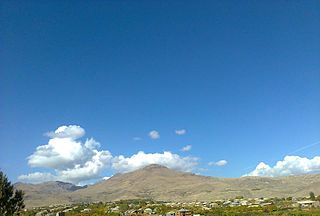
Aghavnadzor is a village in the Areni Municipality of the Vayots Dzor Province in Armenia.

Karchevan is a village in the Meghri Municipality of the Syunik Province in Armenia.
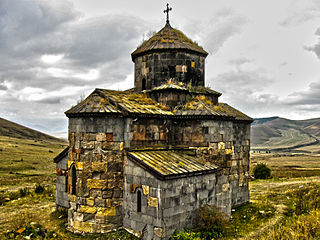
Sverdlov is a village in the Lori Province of Armenia.
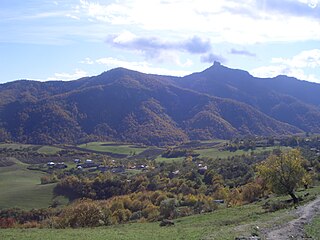
Kolatak is a village located in the Kalbajar District of Azerbaijan, in the region of Nagorno-Karabakh. Until 2023 it was controlled by the breakaway Republic of Artsakh. The village had an ethnic Armenian-majority population until the exodus of the Armenian population of Nagorno-Karabakh following the 2023 Azerbaijani offensive in Nagorno-Karabakh.
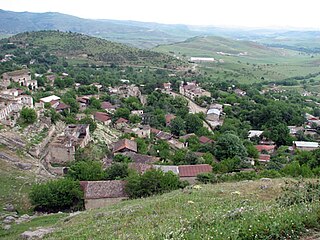
Tugh or Togh is a village in the Khojavend District of Azerbaijan, in the region of Nagorno-Karabakh. The village had a mixed Armenian-Azerbaijani population before the First Nagorno-Karabakh War, the Azerbaijani inhabitants fled the fighting in 1991, and the Armenian population fled the village during the 2020 Nagorno-Karabakh war.

Zar is a village in the Kalbajar District of Azerbaijan.
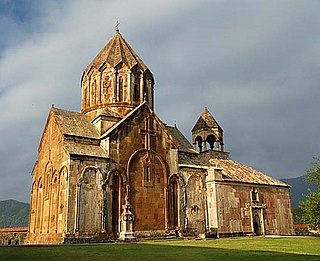
Culture of Artsakh includes artifacts of tangible and intangible culture that has been historically associated with Artsakh in the Southern Caucasus, controlled by Azerbaijan. These include monuments of religious and civil architecture, memorial and defense structures, and various forms of art.

Lori Fortress is an 11th-century Armenian fortress located near the Lori Berd village in Lori Province, Armenia. The fortress was built by David Anhoghin to become the capital of Kingdom of Tashir-Dzoraget in 1065.

Saint Christopher Monastery is a restored Armenian church of the 7th century, located in a cemetery 2.2 kilometres (1.4 mi) southeast of the outskirts of Dashtadem village and Dashtadem Fortress in the Aragatsotn Province of Armenia. Adjacent to the church (north) is a 13th-century stone rectangular tower (bell/defensive/funerary) with sloped walls. It has small windows on the upper portion of the wall, but no access to the interior. The surrounding cemetery has been in use from the 6th century to modern times, and contains several interesting khachkars. A low-stone wall surrounds the complex and a section of the old cemetery. Dashtadem Fortress may be seen in the distance from the monastery.

Tanahat Monastery, is an 8th-century monastery 7 km south-east of Vernashen village in the Vayots Dzor Province of Armenia. It was built between the 8th and 13th centuries. The monastery was also called the Red Monastery because it was built of red stone. Tanahat monastery was built on the site of a pagan temple, which was dedicated to the Armenian goddess Anahit. A Christian temple was founded here in the 5th century. The early medieval cemetery is scattered next to the monastery. Tanahat Monastery functioned until the late Middle Ages and is now in good condition. According to the historian Stepanos Archbishop Orbelyan, in 735 the body of Stepanos Syunetsi was buried in Tanade monastery and a small chapel was built over the grave.

The Kumayri historic district, also known as the Kumayri Historical and Cultural Museum-Reserve, is the oldest part of Gyumri with its own unique architecture. It has more than a thousand buildings dating back to the 19th and 20th centuries. The district is one of few places in Armenia, and the world, with authentic urban Armenian architecture. Almost all the structures of the Kumayri district have survived the two major earthquakes in 1926 and 1988 respectively. The historic district of Kumayri occupies the central and western part of modern-day Gyumri.



















